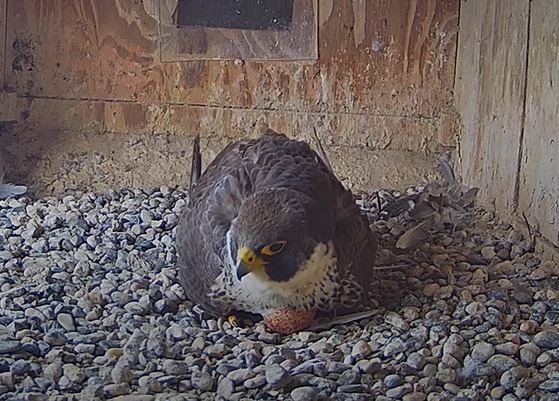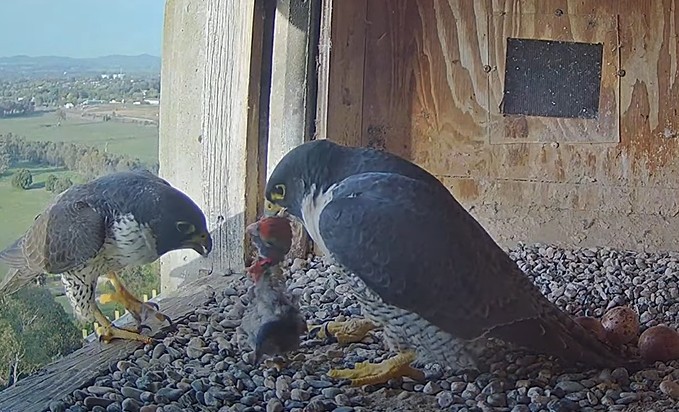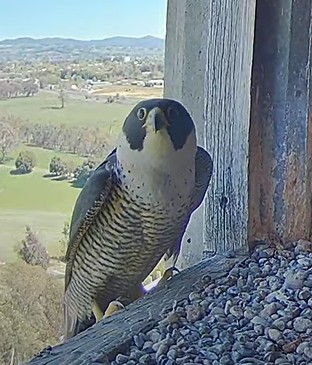Diamond and Gimbir’s third egg arrived on 4th October at 0734 h.
The intervals between the eggs were 59 and 59.5 hours, so quite normal. We don’t know, of course, whether they have been successfully fertilised, but there is no reason not to think so. For some reason, Xavier and Diamond’s third egg never hatched, usually because it hadn’t been fertilised, but this is a different male, so anything could happen. The eggs are due to hatch from about the 3rd November.
Here is the third egg video: https://youtu.be/r8ZDfJEdSGQ
Gimbir has been settling in. For such an immature bird, now just over a year old, I think he is doing very well. He was hesitant at first to incubate, but now he is staying for periods of over an hour, which is excellent. Our very first male, Beau, rarely stayed that long. After ten minutes or so, he would seemingly get bored and go and stand on the ledge, not leaving the nest unprotected, but also not incubating.

However, he (and our other males, Bula and Xavier) did do most of the prey provision during incubation, so Swift (our first female) and Diamond did not have to hunt much during this period. Gimbir has been hunting well for himself, but not always bringing an adequate share for Diamond, so she has been hunting while Gimbir incubates. He has brought in some prey, however, and this seems to be increasing with up to two a day (including pigeon, starling, eastern rosella, red-rumped parrot, noisy miner, red wattlebird and assorted unidentifieds!).

Gimbir brings Diamond a well-chewed eastern rosella [19/10/2025]
He has also been helping to guard the nest. He spends almost every night on the microwave bracket on the side of the tower and has been helping Diamond to shoo away ‘floaters’ and peregrines on the lookout for a new mate and nest. This female actually came into the box briefly, which was quite audacious.

Female ‘floater’ peregrine [10/10/2025] perhaps taken Gimbir’s boyish good looks and a ready made nest…but she didn’t linger once Diamond was around.
So all in all, the season is looking quite bright, albeit a month late. Two issues arise with the lateness: the family depend very much on juvenile starlings that start arriving about now and are often used by the fledgelings for their first hunt practice as they are so unwary in mid-November…..well, they may be a little more wary and agile by mid-December. Also the box can get quite warm in late November and early December, by which time the youngsters would usually have left, so let’s hope for a cool start to summer. Our very first fledgeling, Midgii, was also very late, but she did have the box to herself.